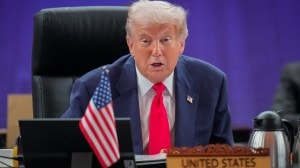Budget for securities
Where do we go next in Indian finance? We have been converting 23 per cent investment into 6 per cent growth. A better financial sector will...

Where do we go next in Indian finance? We have been converting 23 per cent investment into 6 per cent growth. A better financial sector will raise this conversion rate, by allocating resources more efficiently. We are likely to see substantial growth in the savings rate in the future, continuing the trends seen in the recent 2003-04 data. There will be huge growth in the resource flows intermediated by the financial system. To get more bang for the buck, we need to do more on financial sector reforms.
The direct links between finance and poverty cannot be over-emphasised. The poor have highly volatile income, and would be great beneficiaries of finance in order to smooth consumption across time and control risk. When two identical people in the country borrow at starkly different rates, it is an inefficient use of resources. Solving these gaps is good for the poor and good for growth. Modern IT systems have led to a dramatic drop in the cost of processing transactions, and have made it possible to carry finance to the poor. Fostering more modern finance is pro-poor.
Finance is an area where India got a lot done in the last decade. But one fact which shows how far we have to go is equity derivatives at NSE which currently have a turnover of $3 billion/day. Derivatives exchanges in the US do more than $3 trillion/day. Turnover normally goes in proportion to GDP, hence the 1000:1 ratio is outlandish and shows how far we have to go.
We have an extreme contrast between the equity market and the debt market. The equity market has competition, low entry barriers, FIIs, transparency. The debt market has none of these, and is hobbled by poor creditors rights. This is an unhealthy pattern of development: India need both equity and debt capital. We urgently need to ignite debt market reforms, learning from the success of the equity market.
Turning to institutional structures, the UK is an ideal comparison point for India, given two facts. First, India inherited the English legal framework. Second, London is a world centre for finance in a fiercely competitive landscape. They are globally competitive, so learning from them will put us on the right path.
Comparing India and the UK, a few striking differences are visible. They have huge spot and derivatives markets, and securities dominate the financing of large firms. They are completely globalised and trade products from all over the world. They have a clean separation in their financial architecture, where their Treasury issues bonds, their Bank of England is a focused central bank, and all finance is concentrated in a regulator named the Financial Services Authority. They have few entry barriers, giving high levels of competition, and they are comfortable with death — big finance companies die all the time. India fails on all these counts. Closing these four gaps is the essence of the agenda for financial sector policy today.
The UK has a vast range of sophisticated financial products. Why does India fare badly on innovation? It is hard to argue that our best people are unable to create new ideas. More likely, there are enormous barriers to innovation. Every new idea requires going back to a regulator and asking for permission, in contrast with other countries. Even with very smart people, innovation is not a given: investments into innovation come from comparing costs and benefits. In India, too often, when people look at the daunting government environment, it is rational to stay silent. Our atmosphere of controls and “when in doubt, say no” has greatly damaged progress.
For many years, we have tried to make incremental progress within the existing architecture. But we are running out of opportunities for incremental progress, and critical bottlenecks now require changes in architecture. The creation of PFRDA was one such architectural change, which should now pave the way for growth of modern pension funds.
The commodity futures markets are a vital part of agricultural reform, but the best knowledge and institutional capacity available, through which these markets can get a quantum leap, is available on the securities side. This requires “convergence” between commodity futures markets and the securities markets, bringing both under a single regulator, as has been done in every country in the world. This architectural change is in the best interests of Indian agriculture, and should be a top priority.
The second area where fresh thinking in architecture is required is the role of RBI. RBI is saddled with too many functions, all of them conflicting with each other. RBI will be able to carry out its mandate of being a central bank — its ultimate dharma — more effectively through refocusing its mandate upon the work of a central bank.
Finally, there is the globalisation dimension. We have one great success story in front of us: what happened in Indian manufacturing when barriers to foreign companies went away. Indian companies had to struggle to reinvent themselves, but they did, and India is now a great success in the world market. It is now time to repeat this story in finance. At first, it will look difficult for Indian finance companies to compete with foreigners. But finance is even more labour intensive than manufacturing, and India will surely shine. Indian companies competing within India will be the first stepping stone for them to then conquer the world.
We, in the government sector and in the private sector, have to learn to practice economics just like it is done in every modern market economy in the world, by frontally confronting questions of globalisation, and learning how to overcome them. Finance is the mother of all markets, and getting finance right in a modern, globalised, market economy will enable acceleration of GDP growth in the years to come.
The writer is a former finance secretary and is the chairperson of the FRBM Task Force






- 01
- 02
- 03
- 04
- 05

























